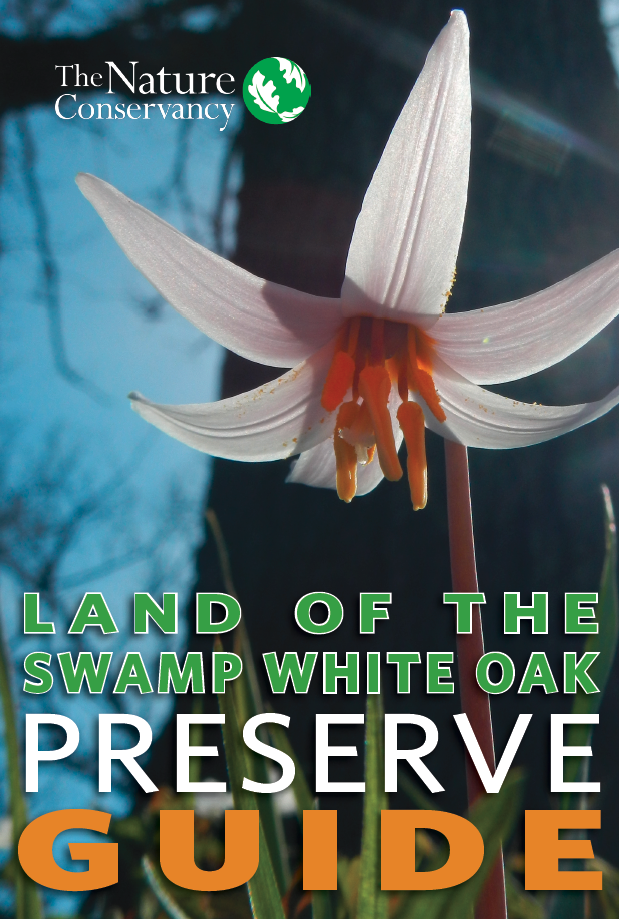Description
Land of the Swamp White Oak Preserve contains one of the best remaining examples of floodplain oak savanna. Most savannas have either become overgrown due to lack of ecological disturbance such as fire and grazing or have been cut down for agricultural purposes. The dominant canopy species in the savanna are swamp white oak, bur oak and hickory, with prairie crabapple, downy hawthorn and redbud filling in the mid-story. The ground cover species vary significantly with changes in topography, soils and canopy cover, but includes a diverse array of grasses, sedges and forbs.
The preserve is also home to a series of unique wetland features including globally rare channel fens. These fens formed in abandoned river channels, also called oxbows, filled with peat or muck soils. Spring flow emanating from the base of the bluff slowed the decomposition of dead vegetation, allowing the muck soils to accumulate over the course of thousands of years, forming a thick floating mat of vegetation over the surface of the oxbow.
Several alluvial streams meander through the preserve. For most of the year, these streams are very slow-moving and provide habitat for rare fish like pirate perch and grass pickerel.
The Nature Conservancy continues to work with nearby landowners who voluntarily choose to protect their land through sales and donations both in-fee and through conservation easements. Our land stewards are working to restore and maintain the ecological communities found here through adaptive management tools such as prescribed fire, conservation grazing and weed management.
We are actively trying to connect more people to nature through educational and experiential use of the preserve. We utilize a collaborative approach to engage with farmers, landowners, community leaders, business leaders, educators, and other stakeholders in the conservation of this important place.





